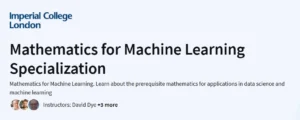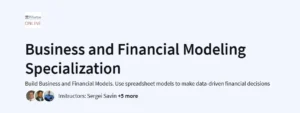What will you learn in An Introductory Guide to Data Science and Machine Learning Course
Core data science pipeline: Explore data acquisition (e.g., web scraping), data wrangling, and visualization using Numpy, Pandas, Seaborn, and SpaCy.
Foundations of probability & statistics: Understand distributions, hypothesis testing, Bayes’ theorem, sampling methods, and descriptive statistics.
Machine learning essentials: Cover regression (linear, multivariate, support vector), classification (SVM, Naive Bayes, ensembles), feature engineering, model evaluation, and hyperparameter tuning.
Unsupervised learning & dimensionality reduction: Dive into clustering techniques (K‑Means, DBSCAN, hierarchical, PCA) and association rule mining.
Deep learning and Big Data overview: Learn key neural network architectures (CNN, RNN, LSTM) and explore big data tools like Hadoop and Spark.
Program Overview
Module 1: Introduction to Data Science
⏳ ~30 minutes
Topics: Differentiate data science vs. analysis and engineering, lifecycle phases, data structures.
Hands-on: Complete a quiz and reflective exercise on industry use cases.
Module 2: Applications of Data Science
⏳ ~30 minutes
Topics: Practical applications in healthcare, recommendation systems, and image analysis.
Hands-on: Examine real-world datasets and build a miniature recommender prototype.
Module 3: Essential Libraries
⏳ ~2 hours
Topics: Web scraping (BeautifulSoup, Scrapy), array ops (NumPy), dataframes (Pandas), NLP basics (SpaCy), visualization (Seaborn).
Hands-on: Extract, transform, explore data from HTML sources, and create visual insights.
Module 4: Probability & Statistics
⏳ ~2 hours
Topics: Distributions, Bayes’ theorem, measures of central tendency/dispersion, hypothesis testing.
Hands-on: Analyze sample datasets, compute probabilities, and conduct t‑tests with quizzes.
Module 5: Machine Learning Part I
⏳ ~3 hours
Topics: Regression models, feature engineering, scaling, model evaluation, regularization.
Hands-on: Solve a house-price prediction challenge using scikit-learn pipelines.
Module 6: Machine Learning Part II
⏳ ~2.5 hours
Topics: Classification algorithms, ensemble methods, imbalance handling, hyperparameter optimization.
Hands-on: Build and evaluate classifiers, improve model performance for imbalanced data.
Module 7: Machine Learning Part III & Unsupervised Methods
⏳ ~2 hours
Topics: Clustering (K‑means, hierarchical, DBSCAN), Apriori for association rules, and PCA.
Hands-on: Segment customers, mine associations, and reduce dimensionality in datasets.
Module 8: Deep Learning Essentials
⏳ ~1.5 hours
Topics: Neural network basics, CNNs, RNNs, LSTMs, and backpropagation.
Hands-on: Build a simple neural network for image or sequence tasks.
Module 9: ML Tools & Big Data
⏳ ~1 hour
Topics: Automl (PyCaret), GPU acceleration (RAPIDS), Hadoop ecosystem, Apache Spark.
Hands-on: Run a Pandas profiling analysis and spin up a Spark task.
Module 10: Next Steps & Projects
⏳ ~30 minutes
Topics: Resources for Kaggle, project pathways, and further learning.
Hands-on: Plan a capstone project roadmap using course insights.
Get certificate
Job Outlook
High-impact skillset: Equips learners for roles as Data Analysts, Business Analysts, Junior Data Scientists, or ML Engineers.
Broad applicability across sectors: Essential in healthcare, finance, tech, retail, image analytics, and recommendation systems.
Foundation for advanced learning: Preps for deeper study in ML, deep learning, big data, and professional certifications.
Industry credential: Educative’s project-based, code-first format builds work-ready skills and portfolio examples.
Explore More Learning Paths
Enhance your data science and machine learning skills with these related courses and resources. These learning paths will help you build a strong foundation, apply practical techniques, and advance your career in data-driven fields.
Related Courses
Data Science and Machine Learning Internship Program
Gain hands-on experience in data science and machine learning through a practical internship program that applies real-world scenarios.Data Science, Statistics, and Machine Learning Specialization
Build a solid understanding of statistical analysis and machine learning techniques essential for data-driven decision-making.Linear Algebra for Machine Learning and Data Science
Learn the mathematical foundations necessary for machine learning algorithms and data science applications.
Related Reading
What Is Python Used For
Discover how Python is extensively used in data science and machine learning for coding, analysis, and model development.
Specification: An Introductory Guide to Data Science and Machine Learning Course
|





